New Navy ships of India: INS Kolkata and INS Kamorta
Destroyer INS Kolkata
The transfer to the fleet of new ships is an important event not only in the context of upgrading equipment, but also for some other reasons. Thus, the construction and testing of the head destroyer of the 15A project was seriously delayed. The development of the project was completed at the beginning of the two thousandth, and in September of 2003, construction of the lead ship of this type started. In accordance with the plans of that time, the ship INS Kolkata (Kolkata - the current official name of the city of Calcutta) was to begin service in the 2010 year. Construction of the ship was completed fairly quickly: already 30 March 2006, he was launched.
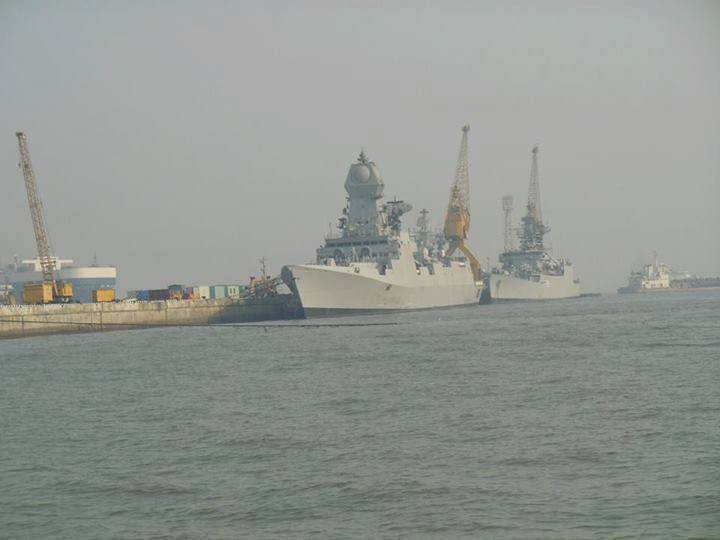
However, in the design of the ship and its systems were identified numerous shortcomings, because of what the tests and refinement was delayed for several years. Moreover, various incidents occurred until the very end of the trials. 7 March 2014 problems led to human sacrifice. During the inspection of the fire extinguishing system, an uncontrolled emission of carbon dioxide occurred, as a result of which one employee of the Mazagon Docks Ltd. shipyard. died and two others were hospitalized with poisoning.
As a result, the tests of the destroyer INS Kolkata ended only in the 2014 year, and the transfer to the fleet took place on July 10. In the very near future, some recent work will be completed, after which the ship will raise the flag of the Indian Navy and it will begin its military service. At the beginning of next year, it is planned to take the second ship of the 15A project, INS Kochi, into the fleet. The approximate deadlines for the delivery of the third destroyer, INS Chennai, are still unknown. According to the plans of the Indian Navy, only three ships of the 15A project will be built. However, at the beginning of 2011, it was decided to develop a project 15B, representing the development of the existing 15A. The new project will be built at least four ships.
Since the end of the last decade, the 15A project and the construction of the ship INS Kolkata have been seriously criticized for their economic characteristics. In 2008, the command of the Indian fleet claimed that the construction and first years of operation of a new type of destroyers would cost the budget about 38 billion rupees (about 640 million US dollars). However, the correction of deficiencies in the lead ship, the revision of the project, the protracted tests and many other factors led to a significant increase in the cost of the program. According to the 2011 year, the head ship of the 15A project went up in price by 220-230% - its value reached 117 billion rupees (2 billion dollars). The reasons for this increase in the cost of the Indian Ministry of Defense announced the increased wage costs for shipbuilders, inflation and improvements in various systems.
The development of the 15A project started back in 1986. Ships of this type were supposed to be a modified and modernized destroyers of the project 15. Since the Indian specialists did not have adequate experience in creating such ships, in designing both projects, it was decided to seek help from foreign colleagues. An important role in the creation of the 15 and 15A types of destroyers was played by the Soviet Northern PKB (Leningrad). In addition, at the beginning of the two thousandth year, the 15A project was slightly reworked based on the use of components and equipment supplied by Western countries.
The destroyer INS Kolkata has a displacement of 7600 tons with a body length of 163 and a width of 17,4 meter. In the design of the ship's hull, you can see some technical solutions inherent in modern military shipbuilding. The sides of the hull and the superstructure transform into each other, and some elements of the superstructure are a combination of large straight-line panels. This may indicate that the authors of the project took into account the need to reduce the radar visibility of the ship. At the same time on the decks and superstructure there are a large number of different protruding elements that can increase the ship's ESR. Probably, in the development of the project, stealth was not among the main tasks.
The 15A project destroyers are equipped with a COGAG (Combined gas turbine and gas turbine) power plant. Its main element is two gas-turbine engines M36E developed by the Ukrainian enterprise Zorya-Mashproekt. In addition, there are four DT-59 gas turbine engines in the power plant. Engines interact with the two propeller shafts with two RG-54 gearboxes. Also on the ships are installed two diesel engines Bergen / GRSE KVM and four Wärtsilä WCM-1000 electric generators with a power of 1 MW.
Such a power plant allows the ship to reach a maximum speed of up to 30 nodes. With an economic speed of 18 knots, the cruising range reaches 8000 nautical miles. Data on the autonomy of the reserves of provisions for the crew of 325 people are missing.
The main means of monitoring the situation on the ships of the 15A project is the EL / M-2248 MF-STAR radar with an active phased antenna array created by the Israeli company IAI. It is alleged that this radar is capable of detecting a high-altitude "fighter" target at ranges of at least 250 km. Detection of cruise missiles flying at low altitudes is carried out at ranges of at least 25 km. In addition, the electronic equipment of the destroyer INS Kolkata and its sisterships includes the Thales LW-08 and IAI EL / M-2238 radars. To counter enemy radar destroyers must use the electronic warfare system Elbit Systems Deseaver MK II of Israeli design.
The detection of enemy submarines is supposed to be carried out using the HUMSA-NG hydroacoustic complex installed in the bow of the ship and the Nagin towed system. Both systems are developed by the Indian company Bharat Electronics Ltd. (BEL).
BEL has also developed and is supplying a combat information and control system (BIU) for new ships. To coordinate the actions of various systems on the destroyers of the 15A project, the EMCCA Mk4 BIUS is used.
The main strike armament of the 15A project destroyers are BrahMos missiles. 16 of such products are loaded into two universal vertical launchers. For the destruction of enemy submarines, ships can use four torpedo tubes of caliber 533 mm or two jet bombs of RBU-6000 installed in the bow of the ship.
The tasks of air defense are assigned to anti-aircraft missiles Barak 1 or Barak 8 with a range of up to 12 and up to 70 km, respectively. These missiles are loaded into four vertical launchers with 16 cells on each. Thus, the ship carries several types of 64 anti-aircraft missiles. To defeat air targets that have broken through two echelons of missile defense, the ships are equipped with Russian-made anti-aircraft artillery units AK-630. Also, the Oto Melara SRGM system with an 76 caliber mm gun is part of the ship’s artillery armament.
A helicopter landing pad is provided at the stern of the ship. The aft part of the superstructure houses the hangar to accommodate two helicopters.
Corvette INS Kamorta
On July 12, at the Garden Reach Shipbuilders & Engineers Limited (GRSE) shipyard in Kolkata, the INS Kamorta head anti-submarine corvette was handed over to the naval forces. The new corvettes of Project 28 are assigned the task of combating enemy submarines, which determines their appearance. According to reports, by 2017, the Indian Navy should receive four such ships. They will replace the outdated Project 159E patrol boats, previously acquired from the Soviet Union.
The lead ship of the project, INS Kamorta (“Kamort” - one of the Nicobar Islands), transferred to the fleet a few days ago, was laid down in November 2006 of the year and launched on August 2009. The construction of the second project corvette (INS Kadmatt) started in the fall of 2007, and the third (INS Kiltan) in the summer of 2010. The fourth ship, INS Kavaratti, was laid at the start of 2012. According to current plans, starting from 2014, each year the Navy will receive one new corvette from the 28 project.
An additional objective of the 28 project is the development of Indian shipbuilding. However, attempts to increase the potential of Indian enterprises, as in the case of the 15A project, have led to unexpected financial consequences. Initially it was assumed that the cost of each of the four new corvettes will not exceed 28 billion rupees (about 480 million dollars). However, in the first half of the two thousand years, when preparations were made for the construction of ships, the cost of the project grew so much that the cost of each corvette approached 70 billion rupees (1 billion dollars). According to reports, it was decided to finalize the project in order to reduce the cost, which led to noticeable delays: the construction of the head corvette began two years later than previously planned. The cost of the program with almost no change.
In the 28 project, various foreign components are widely used, but it was developed by Indian experts practically without the help of foreign colleagues. The reason for this was the orientation towards the development of domestic production and the minimization of purchases of foreign products.
The INS Kamorta anti-submarine corvette has a standard displacement of 2800 tons and maximum 3200 tons. The steel hull of the ship has a total length of 109,1 m and width of 13,7 m. The design took into account the need to reduce radar visibility, thanks to which the hull and superstructure of the ship have a characteristic shape formed by straight panels. At the same time, as in the case of destroyers of the 15A project, 28-type corvettes have a large number of protruding elements on the decks and superstructures. The crew includes 195 people, including 15 officers.
The power plant of the corvettes project 28 built on the CODAD (Combined diesel and diesel - "Combining diesel and diesel"). The design of the power plant Indian specialists were engaged in collaboration with French engineers from the company DCNS. According to some reports, the French participation in the project was to create a low-noise gearbox. The power plant incorporates four diesel engines Pielstick 12 PA6 STC, transmitting torque to two gears and two propellers. To power the on-board electronics, generators manufactured by the Finnish company Wärtsilä are used.
The maximum speed of the corvette INS Kamorta - 25 nodes. When driving at an economic speed of 18 knots, the cruising range is up to 3500 miles.
To detect surface and airborne targets, 28 ships must use the REVATHI radar, developed by the Indian organization DRDO. To control the weapons used radar IAI EL / M-2221 STGR Israeli production. In addition, the radar equipment BEL Shikari, the communication system BEL RAWL02, the sonar system and the electronic warfare system Elbit Systems Deseaver MK II are part of the radio-electronic equipment of the new corvettes.
The 28 project corvettes are designed to search and destroy enemy submarines and therefore have a specific set of weapons. For the destruction of enemy submarines on each side of the ship there are two torpedo tubes of caliber 533 mm. In addition, in the bow of the ship, on a superstructure in front of the bridge, two jet bombers of RBU-6000 are installed. If necessary, the Westland Sea King or similar helicopter carrying the appropriate equipment can search and attack submarines.
To protect against air attacks, the corvette INS Kamorta and other ships of the 28 project carry rocket and artillery weapons. They are equipped with two launchers for different types of Barak missiles (2x8), as well as two AK-630M artillery mounts. In the forward part of the ship is the Oto Melara SRGM artillery mount with an 76-mm gun.
According to reports, the development of a new project with the 28A index has already begun, the goal of which is to eliminate the flaws identified in the basic 28 project and the subsequent modernization of anti-submarine corvettes. The command of the Indian Navy plans to build up to eight such ships in addition to the four corvettes of the base project, the first of which will soon be commissioned.
On the materials of the sites:
http://thehindu.com/
http://bmpd.livejournal.com/
http://naval-technology.com/
http://bharat-rakshak.com/
http://globalsecurity.org/
http://business-standard.com/
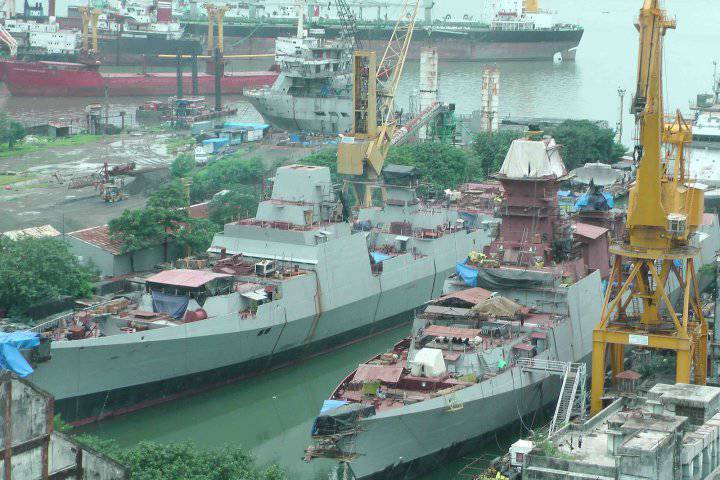

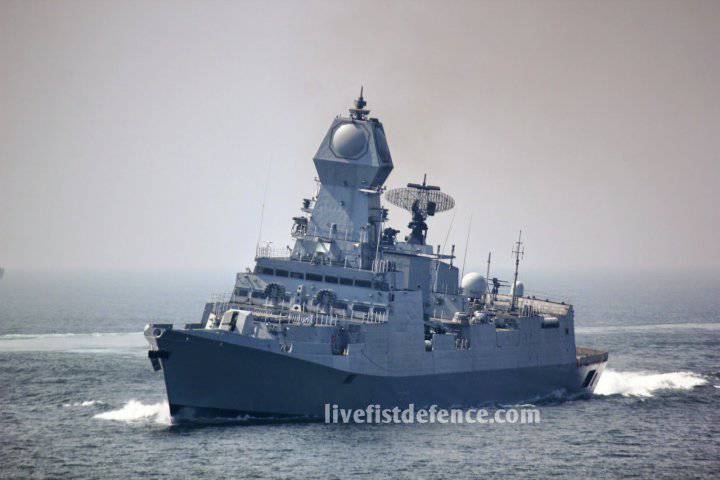
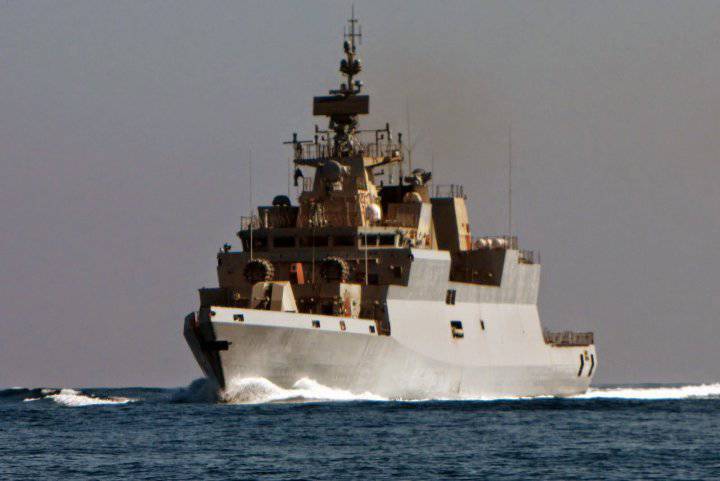
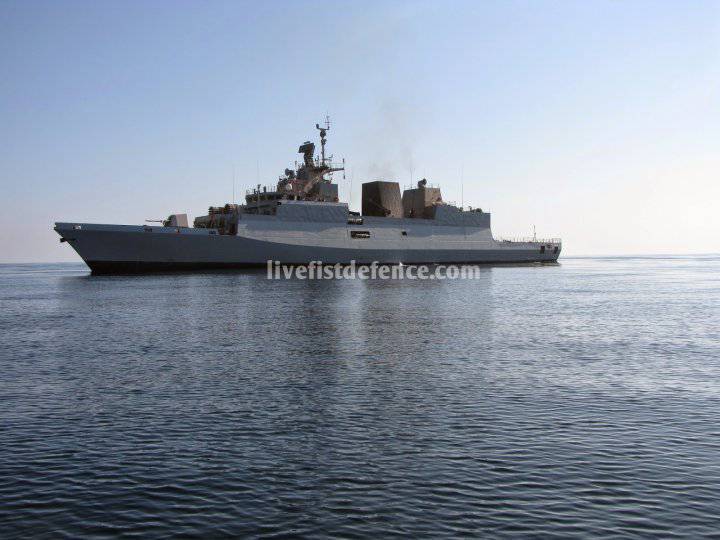
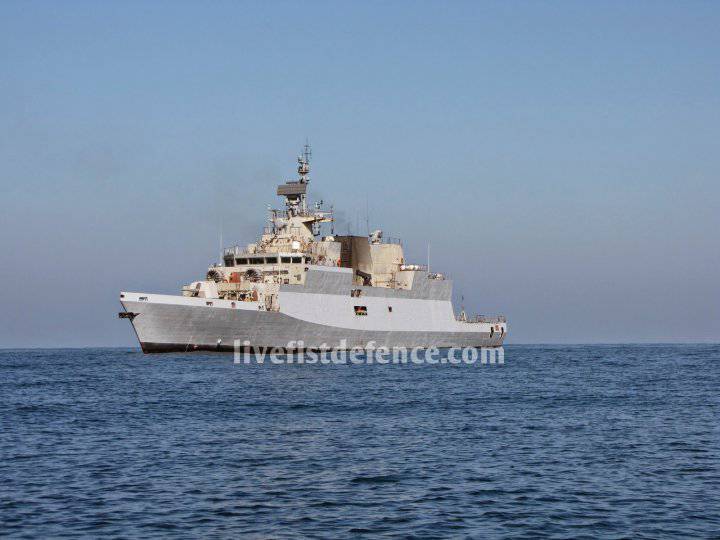
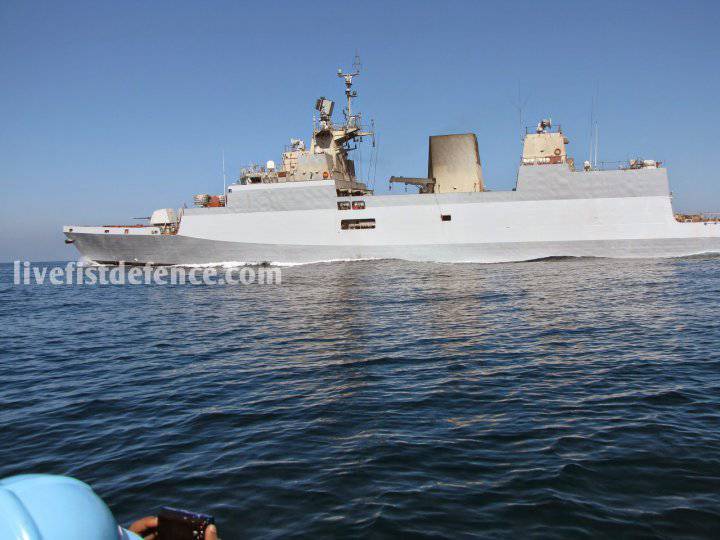
Information